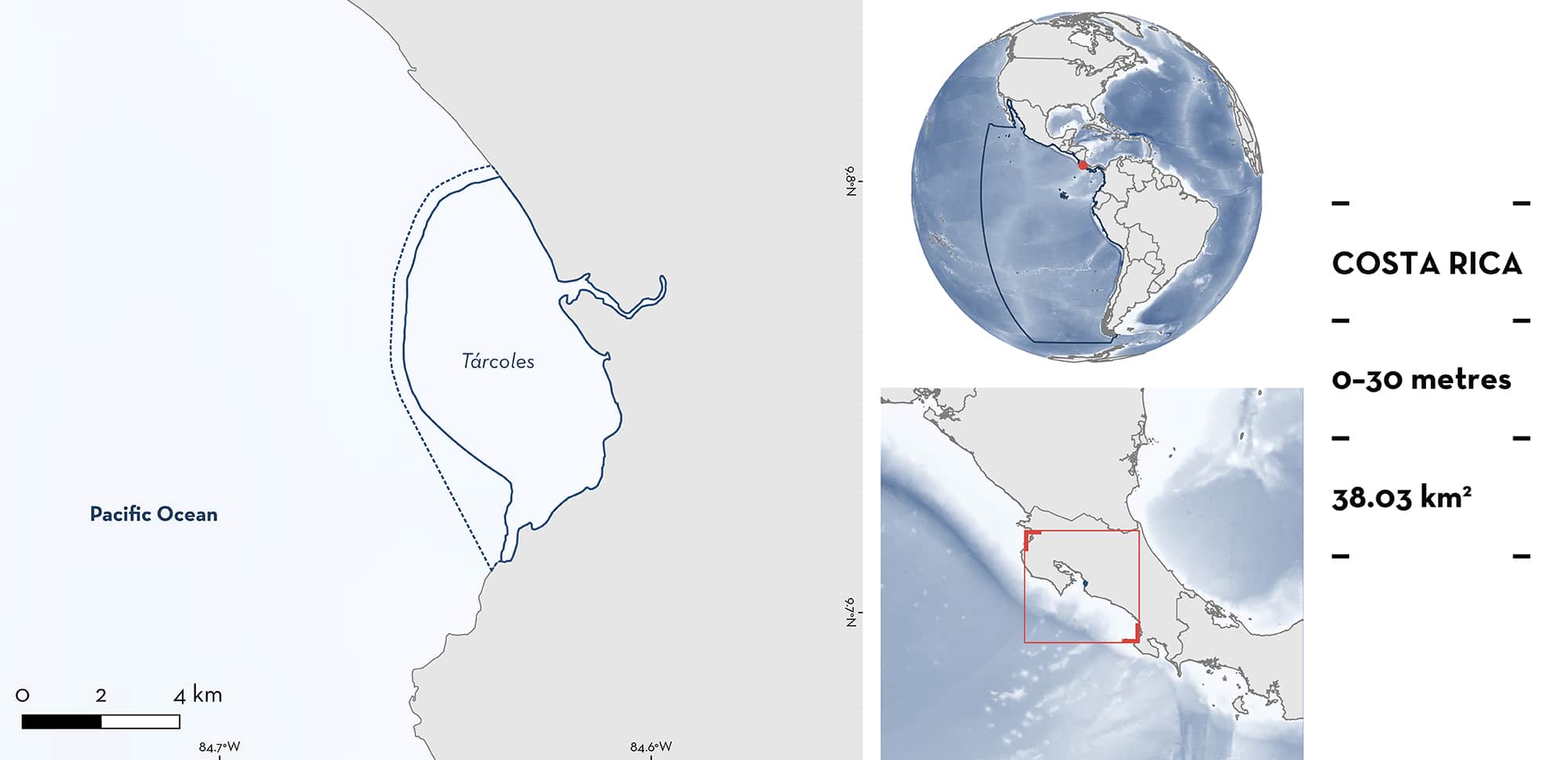ISRA FACTSHEETS
ISRA FACTSHEETS
CENTRAL AND SOUTH AMERICAN PACIFIC REGION
Tárcoles
Summary
Tárcoles is located in the southeast portion of the Gulf of Nicoya, on the central Pacific coast of Costa Rica. The Gulf of Nicoya is a large tropical estuary (609 km2) with 150 km of coastline, of which 112 km is fringed with mangroves. The area includes the Tárcoles River Basin where high nutrient levels facilitate prey persistence, and turbid waters provide refuge. Within this area there are: threatened species and reproductive areas (Scalloped Hammerhead Sphyrna lewini).
Download factsheet
Tárcoles
DESCRIPTION OF HABITAT
Tárcoles is located in the southeast portion of the Gulf of Nicoya along the coast of Puntarenas on the central Pacific coast of Costa Rica. Located within the Pacific Central-American Coastal Large Marine Ecosystem, the Gulf of Nicoya is a large tropical estuary (609.38 km2) with 150 km of coastline of which 112 km is covered with mangroves. The area is characterised by well-defined wet (June-November) and dry (December-May) seasons, and is mainly influenced by the Tárcoles River Basin, which creates an important and productive area. The mouth of the river has turbid waters which offer refuge and protection for several species (Arauz & Zanella 2007; López-Garro et al. 2009; Zanella et al. 2009).
This Important Shark and Ray Area is delineated from surface waters (0 m) to a depth of 30 m based on the depths where fisheries catching the Qualifying Species operate in the area.
CRITERION A
VULNERABILITY
One Qualifying Species considered threatened with extinction according to the IUCN Red List of Threatened SpeciesTM regularly occurs in this area. This is the Critically Endangered Scalloped Hammerhead (Rigby et al. 2019).
CRITERION C
SUB-CRITERION C1 – REPRODUCTIVE AREAS
Tárcoles is an important reproductive area for one shark species. There is a regular and high abundance of neonate and juvenile Scalloped Hammerhead measuring 40–60 cm total length (TL). Scalloped Hammerheads caught and landed between March 2006 and May 2007 (n = 273) were measured either on-board during observation trips or at the landing site in this area (Arauz et al. 2007; López-Garro et al. 2009; Zanella et al. 2009, 2010). Embryos were recorded at sizes between 41–51 cm TL (Bejarano-Álvarez 2011). Neonates were caught by artisanal fishers at a fishing site known as Peñon, slightly north of the Tárcoles River. In Peñon, pups were mostly observed closer to the river mouth, which is shallow and turbid, thus offering protection and a clear advantage at this lifecycle stage. Scalloped Hammerheads are caught throughout the year, across multiple years, and pupping occurs between March and May. The highest number of Scalloped Hammerheads caught was in April, corresponding with the high discharge of nutrients from rivers as a result of the onset of the rainy season. As Scalloped Hammerheads mature, they move away from this area, outside of the Gulf of Nicoya (Zanella et al. 2010). Although further investigation is required to determine the duration that neonate Scalloped Hammerheads remain in this area, there are estimations that this species remains in the Gulf of Nicoya for two to three years (Mendoza & Tolentino 2001).
Download factsheet
SUBMIT A REQUEST
ISRA SPATIAL LAYER REQUEST
To make a request to download the ISRA Layer in either a GIS compatible Shapefile (.shp) or Google Earth compatible Keyhole Markup Language Zipped file (.kmz) please complete the following form. We will review your request and send the download details to you. We will endeavor to send you the requested files as soon as we can. However, please note that this is not an automated process, and before requests are responded to, they undergo internal review and authorization. As such, requests normally take 5–10 working days to process.
Should you have questions about the data or process, please do not hesitate to contact us.


